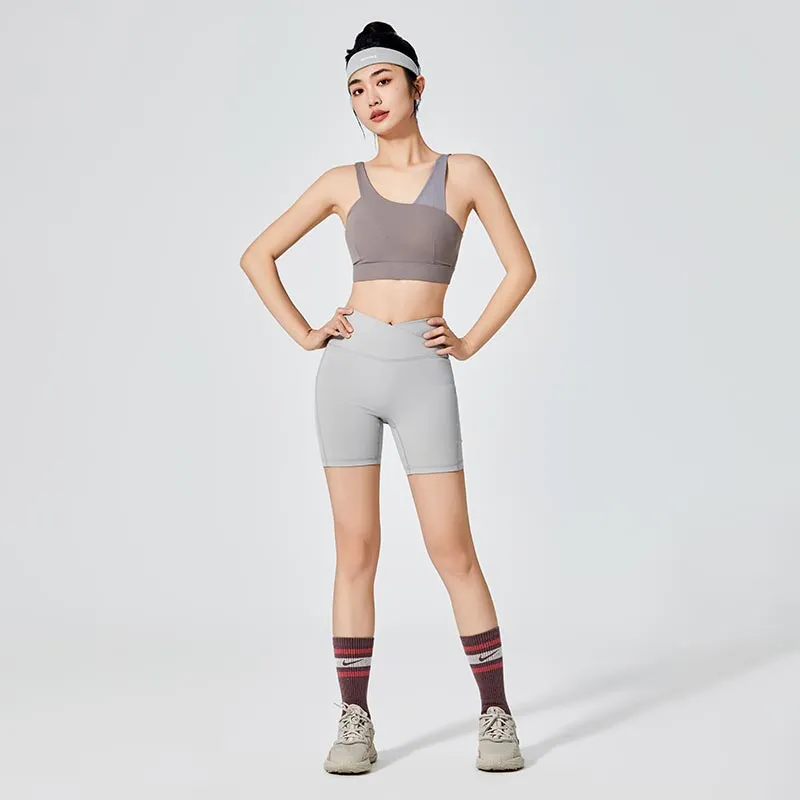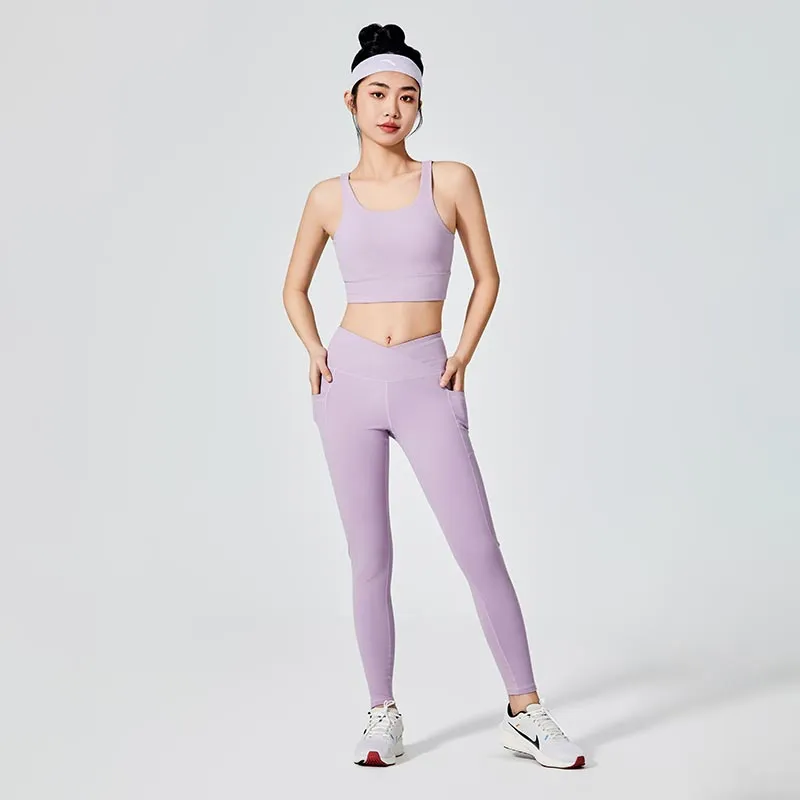Types of Sports Bras: A Guide to Finding the Right Fit
2024-10-11
Sports bras are an essential piece of activewear designed to provide support and comfort during physical activities. They come in various styles, each catering to different levels of activity and body types. Whether you're engaging in low-impact activities like yoga or high-impact exercises like running, there’s a sports bra suited for every need. Below are the main types of sports bras and their unique features.
1. Compression Sports Bras
Features:
- Designed to compress the breasts against the chest to reduce movement.
- Typically come in a pullover style without separate cups.
Best For:
- Low- to Medium-Impact Activities: Ideal for activities like yoga, pilates, walking, or cycling, where breast movement is moderate.
- Smaller Bust Sizes: More suitable for women with smaller busts (A to C cup), as the compression style may not provide enough support for larger breasts during high-impact activities.
Advantages:
- Simple design and easy to wear.
- Lightweight and comfortable for less intense workouts.
Disadvantages:
- May not provide enough support for high-impact sports or larger cup sizes.
- Can flatten the chest and be less flattering for some body types.

2. Encapsulation Sports Bras
Features:
- Contain individual cups to support each breast separately, much like a regular bra.
- Typically have a more structured design with seams, underwire, or molded cups.
Best For:
- Medium- to High-Impact Activities: Ideal for running, aerobics, or high-intensity interval training (HIIT), where maximum support is required.
- Larger Bust Sizes: Provides more support and shape for women with larger cup sizes (D and above).
Advantages:
- Offers better shaping and separation of the breasts, making them more flattering.
- Provides more structured support, especially for larger busts.
Disadvantages:
- May feel bulkier than compression bras.
- Not as comfortable for low-impact activities or casual wear.
3. Combination (Compression + Encapsulation) Sports Bras
Features:
- Combines the compression and encapsulation designs for maximum support.
- Both compresses the chest and has separate cups for each breast, offering the best of both worlds.
Best For:
- High-Impact Activities: Ideal for intense workouts, such as running, cross-training, or high-impact sports like basketball.
- All Bust Sizes: Suitable for both smaller and larger busts, offering excellent support across the board.
Advantages:
- Provides the highest level of support, making it ideal for high-impact sports.
- Reduces bounce while maintaining breast shape and comfort.
Disadvantages:
- Can be more expensive than other types of sports bras.
- May feel too restrictive for some wearers, especially during low-impact activities.
4. Racerback Sports Bras
Features:
- Straps come together in the back to form a “Y” shape, resembling a racerback design.
- Often provide extra support by redistributing weight across the back and shoulders.
Best For:
- High-Impact Activities: Great for activities like running or high-intensity workouts due to the additional support from the racerback design.
- Narrow Shoulders: Prevents straps from slipping, making them ideal for women with narrower shoulders.
Advantages:
- Provides extra support and minimizes bounce.
- Straps don’t slip off the shoulders, offering a secure fit.
Disadvantages:
- May be harder to put on and take off, especially without a clasp.
- Some people find racerback bras uncomfortable due to the pressure on the shoulders and neck.
5. Criss-Cross Back Sports Bras
Features:
- Straps cross over each other in the back, creating a criss-cross design.
- Often comes with adjustable straps for a more customized fit.
Best For:
- Medium-Impact Activities: Suitable for workouts like cycling, hiking, or strength training.
- Fashion-Conscious Wearers: The criss-cross design is aesthetically pleasing and often used as part of athleisure outfits.
Advantages:
- Stylish design that can be worn as a top with certain outfits.
- Provides good support while allowing for flexibility and movement.
Disadvantages:
- May not offer as much support as a racerback or combination bra for high-impact activities.
- Straps can be difficult to adjust or may dig into the skin.
6. Padded Sports Bras
Features:
- Includes built-in or removable padding for added shape and coverage.
- Typically provides more support and enhances the bust shape.
Best For:
- Low- to Medium-Impact Activities: Great for activities like yoga, weightlifting, or casual outings.
- Those Seeking More Coverage: Ideal for women who prefer a little extra padding for shape or modesty.
Advantages:
- Provides extra coverage, reducing visible nipples.
- Enhances the appearance of the bust for a more flattering shape.
Disadvantages:
- May feel bulky for some activities or climates.
- Padding can shift or bunch during wear if not sewn in.

7. Front-Zip Sports Bras
Features:
- Designed with a zipper closure at the front for easy wear and removal.
- Often includes encapsulation or compression features.
Best For:
- Post-Surgery: Ideal for women recovering from breast surgery or those with limited mobility, as they are easier to put on and take off.
- Medium-Impact Activities: Suitable for moderate-intensity workouts like weightlifting or cycling.
Advantages:
- Convenient for women who struggle with back closures or pulling bras over their heads.
- Easy to put on and remove, especially when sweaty after a workout.
Disadvantages:
- The zipper can sometimes cause discomfort if it’s not padded or positioned correctly.
- Some front-zip designs may not offer as much support as traditional sports bras.
8. Seamless Sports Bras
Features:
- Made without seams, offering a smooth, soft, and comfortable fit.
- Typically made from stretchy, moisture-wicking fabric for added comfort.
Best For:
- Low-Impact Activities: Perfect for yoga, pilates, or lounging.
- Comfort Seekers: Ideal for women looking for a comfortable, all-day wear bra without the discomfort of seams or underwire.
Advantages:
- Provides a smooth look under clothing.
- Extremely comfortable and lightweight, great for all-day wear.
Disadvantages:
- Offers less support compared to structured sports bras.
- Not ideal for high-impact sports due to the lack of structure and compression.
Conclusion
Choosing the right sports bra depends on the type of activity you’re doing and your body’s specific needs. Compression bras are great for low-impact exercises, while encapsulation or combination bras offer the best support for high-impact activities. The design—whether racerback, criss-cross, or front-zip—also plays a role in determining comfort and ease of use. Understanding the different types of sports bras will help you find the perfect fit for your workout routine and comfort preferences.


